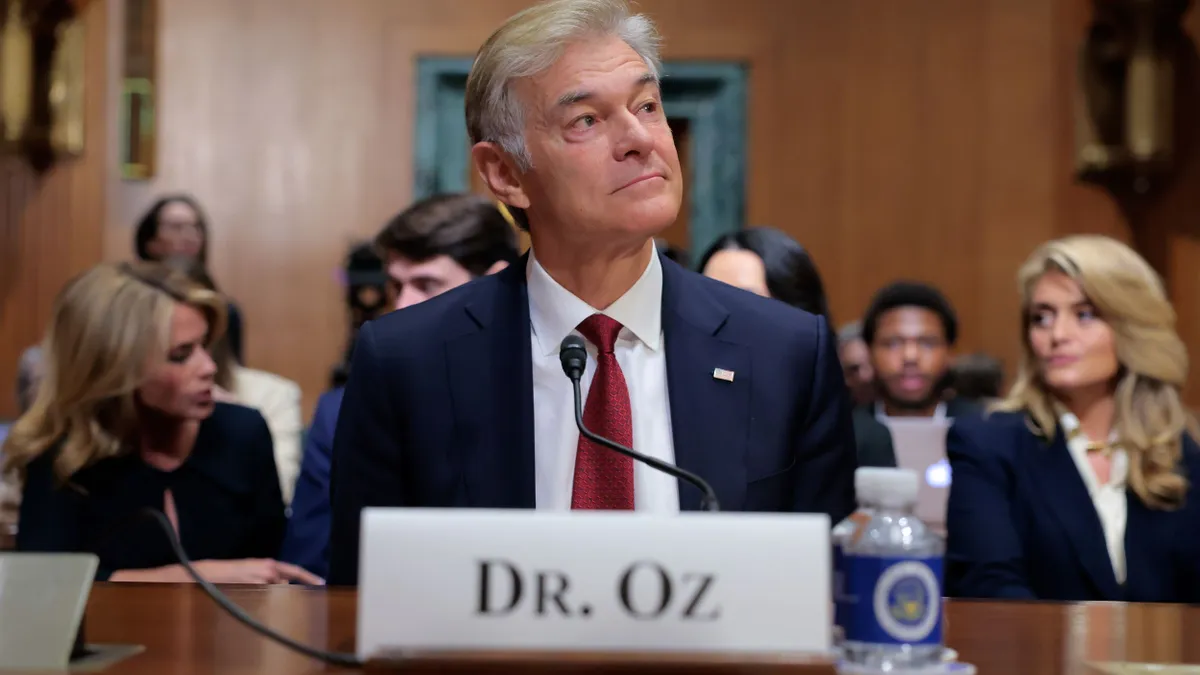Dive Brief:
- The Trump administration is taking new steps to enforce its price transparency requirements, updating guidance for health insurers and hospitals, and asking for public input on how to boost compliance with existing transparency rules.
- The CMS updated its price transparency guidance for hospitals, now requiring them to list “actual prices of items and services, not estimates,” and requested public input on how to ensure data shared is accurate and complete. The departments of Labor, HHS and Treasury also issued a request for information on health plans’ readiness to comply with drug price disclosure requirements.
- The multi-agency push to increase oversight of price transparency compliance follows a February executive order from President Donald Trump with the aim of ensuring hospitals and insurers are posting accurate and transparent price data, in order to help patients shop for services and bolster competition.
Dive Insight:
Trump has made price transparency a priority since his first term in office, when he introduced regulations in 2019 that required hospitals to publicly disclose prices reflecting what patients and insurers “actually pay” for services. A federal price transparency rule went into effect in 2021 requiring hospitals to post pricing information in a consumer-friendly display for their 300 most common procedures, including standard charges for all payers and plans.
Price data can help patients spot swings in costs for services, proponents say. Patient Rights Advocate, a nonprofit advocacy group, said last year that prices could even vary ten-fold within the same hospital and 31-fold across hospitals in the same region.
However, Trump and others argue the Biden administration dropped the ball on price transparency by failing to adequately enforce the regulations. Although hospitals can face fines for failing to comply with the rules, recent reports from Patient Rights Advocate and the HHS’ Office of Inspector General last year detail widespread hospital noncompliance with the rules, partially due to a lack of oversight from the CMS.
In 2024, the CMS issued just three civil monetary penalties associated with price transparency, according to the agency’s website. This year, the CMS has stepped up enforcement, issuing 10 enforcement actions so far.
Now, Trump is prioritizing enforcement. He issued an executive order this winter tasking the departments of the Treasury, Labor and the HHS with developing a framework to enforce his 2019 executive order on price transparency within 90 days.
To do so, the agencies are soliciting public feedback on the feasibility of implementing price transparency requirements, including data elements necessary for drug price disclosures, how easily insurers can capture data necessary for reporting requirements and what barriers exist to hospitals posting full and accurate price data.
“Transparency in health care is essential, not optional,” said CMS Chief of Staff and Deputy Administrator Stephanie Carlton in a statement. “Americans deserve to know exactly what they’re paying for and what they’re getting in return.”
The agencies are also getting more specific about what hospitals and insurers need to do to be in compliance with the price transparency rules.
Thursday’s update requires hospitals to publicly share a “standard charge dollar amount” for services whenever possible, including gross charges, cash prices, payer-specific negotiated rates and any minimum negotiated charges. If a dollar amount isn’t available, hospitals can list prices as a percentage.
Insurers will also have to update their reporting format for rates for covered items and services, out-of-network allowed amounts and negotiated rates for covered prescription drugs, according to guidance from the DOL, HHS and Treasury.
The full reporting schema, which is designed to allow users to more easily navigate files and decrease duplicate and redundant data, will be released in October and enforcement will start in February. Health plans can be audited, receive warning notices or be placed on a corrective plan and face financial penalties.
Analysts from Turquoise Health, which provides price transparency consulting services for healthcare companies, said the focus on payers is new and noteworthy.
“This is a significant signal to health plans that there is a future where they will be held just as accountable to requirements as hospitals,” wrote Joe Wisniewski, associate vice president of Turquoise, in a company blog post. “While we would have liked to see robust guidance and enforcement happen for both sides simultaneously, we think this new development is the right step toward fair, equitable, and clear enforcement of existing regulations wholesale.”
A spokesperson for the American Hospital Association said the industry group “recognizes the importance of compliance,” both for hospitals and insurers.
“We are reviewing the proposals in detail and welcome further collaboration with the Administration to ensure that patients are able to get the information they need to make informed decisions about their care,” the spokesperson said.













